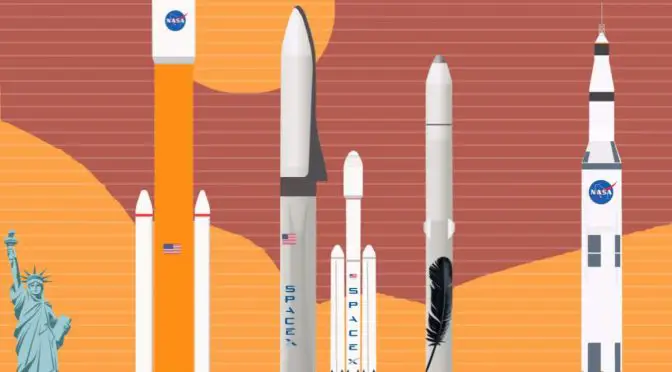Tech Insider published a video titled “How NASA, SpaceX, and Blue Origin’s Monster Rockets Compare”. Still, the old Saturn V, which was used by NASA between 1967 and 1973 and took humans to the Moon, is the biggest and strongest rocket ever built. But new rockets are coming and that’s finally about the change. Here is the past and future monster rockets comparison:
Rockets comparison
Length (or Height)
- NASA Saturn V – 363 feet (110.64 m)
- SpaceX Falcon Heavy – 229 feet (69.80 m)
- SpaceX BFRNotes 1 – 348 feet (106.07 m)
- NASA SLS (Space Launch System) – 365 feet (111.25 m)
- Blue Origin New Glenn Rocket – 326 feet (99.36 m)
Payload capacity (to LEONotes 2) comparison
- Saturn V – 310,000 lbs (140,613 kg)
- Falcon Heavy – 119,000 lbs (53,977 kg)
- SLS – 286,000 lbs (129,727 kg)
- BFR – 330,000 lbs (149,685 kg)
- New Glenn Rocket – 99,210 lbs (45,000 kg)
Thrust comparison
- Saturn V – 7.6 million pounds (3,442,302 kg, 42 Boeing 747s)
- Falcon Heavy – 5.1 million pounds (2,313,321 kg, 28 Boeing 747s)
- SLS – 9.2 million pounds (4,173,049 kg, 51 Boeing 747s)
- BFR – 11.8 million pounds (5,352,390 kg, 66 Boeing 747s)
- New Glenn – 3.85 million pounds (1,746,331 kg, 21 Boeing 747s)
Saturn 5
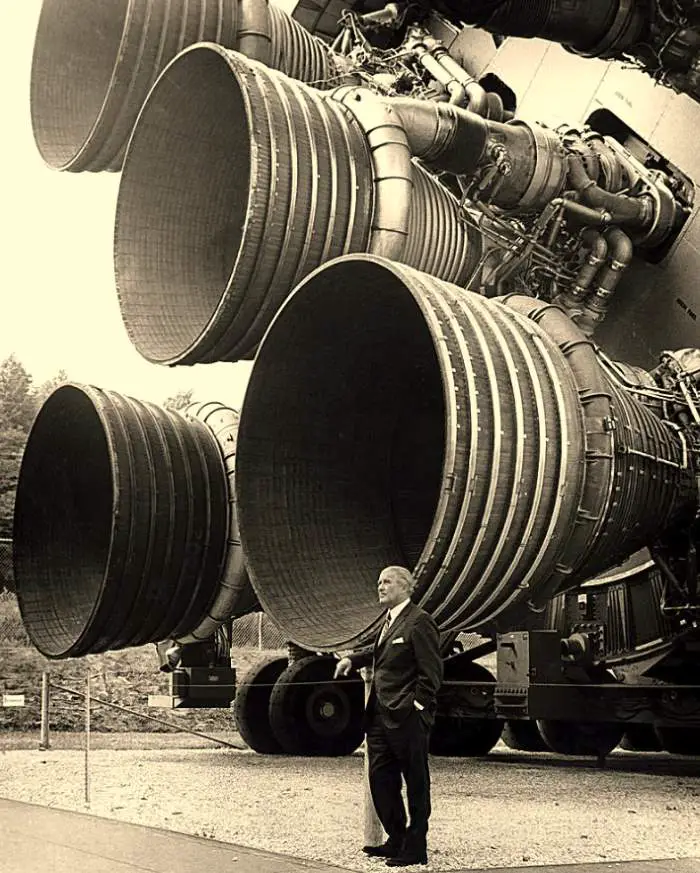
Related: Saturn V Rocket [Documentary]
Saturn 5, used by NASA between 1967 and 1973, is still the biggest and most powerful rocket ever built. It was used for human exploration of the Moon and was later used to launch the first American space station Skylab, which orbited Earth from 1973 to 1979.
Here is the July 16, 1969 TV broadcast of the launch of the Apollo 11 Saturn V rocket which carried astronauts Neil Armstrong, Buzz Aldrin, and Michael Collins to the Moon. Probably the most important moment in humanity’s history so far.
Below is the raw clip from Camera E-8 on the launch umbilical tower/mobile launch program of Apollo 11. See how powerful beast the Saturn V was.
Falcon Heavy
Falcon Heavy, previously known as the Falcon 9 Heavy, is a variant of the Falcon 9 launch vehicle and will consist of a strengthened Falcon 9 rocket core, with two additional Falcon 9 first stages as strap-on boosters. With the ability to lift into orbit over 54 metric tons (119,000 lb) – a mass equivalent to a 737 jetliner loaded with passengers, crew, luggage, and fuel. Falcon Heavy can lift more than twice the payload of the next closest operational vehicle, the Delta IV Heavy, at one-third the cost.
Falcon Heavy draws upon the proven heritage and reliability of Falcon 9. Its first stage is composed of three Falcon 9 nine-engine cores whose 27 Merlin engines together generate more than 5 million pounds of thrust at liftoff, equal to approximately eighteen 747 aircraft. Only the Saturn V moon rocket, last flown in 1973, delivered more payload to orbit. Falcon Heavy was designed from the outset to carry humans into space and restores the possibility of flying missions with the crew to the Moon or Mars.
On December 20, 2017, SpaceX founder Elon Musk has released the first pictures of the company’s Falcon Heavy booster on Twitter. The photos show the powerful rocket in its hangar at the Kennedy Space Center, where it is getting prepared for its long-awaited maiden flight in January 2018. Musk also tweeted that the first payload will be his “…midnight cherry Tesla Roadster playing Space Oddity. The destination is Mars orbit. Will be in deep space for a billion years or so if it doesn’t blow up on the ascent.” The rocket will boost the electric car past the orbit of Mars on a trajectory around the Sun, Musk said.
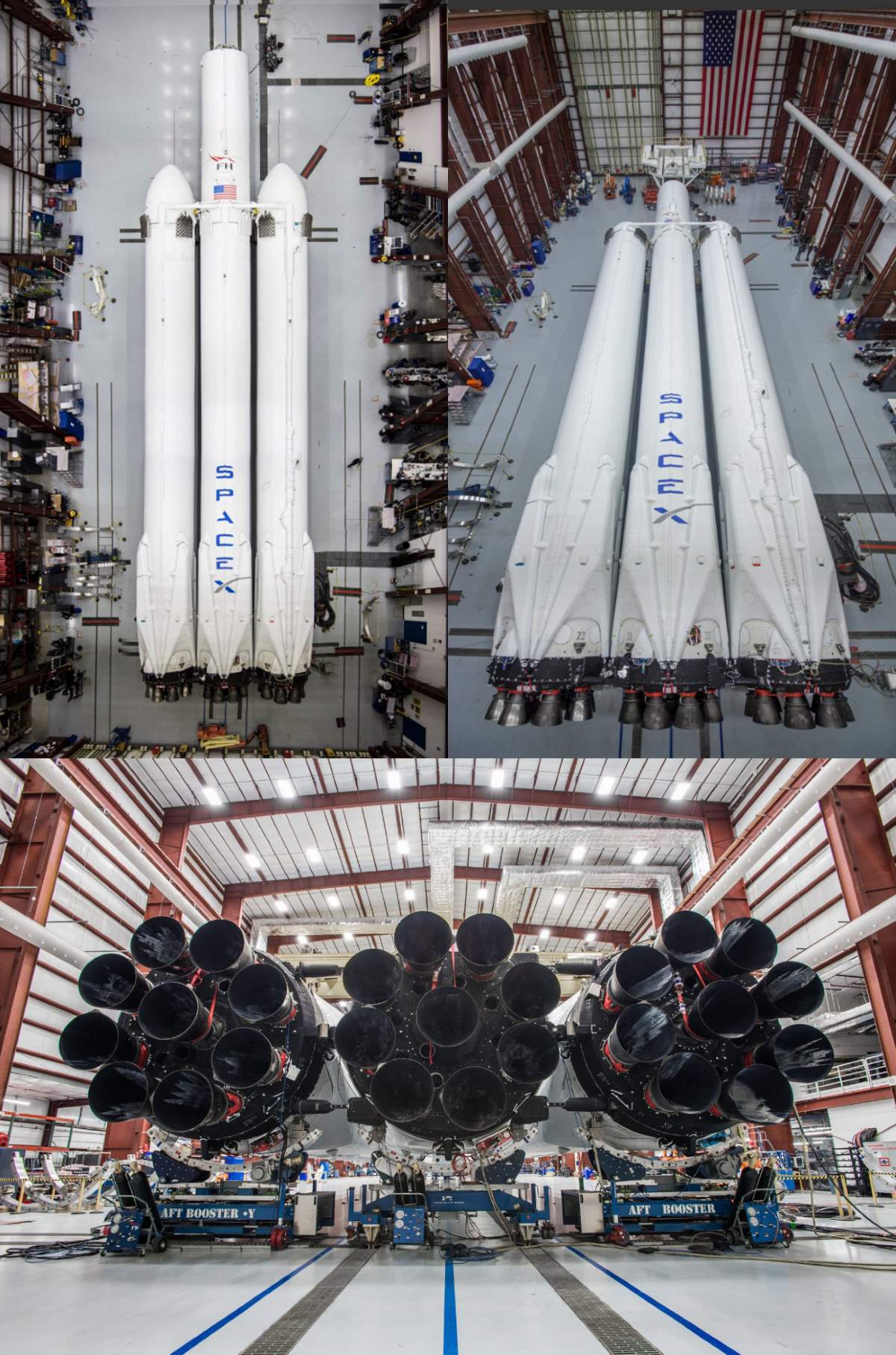
When exactly will the maiden flight will be, is still not announced. Since the Saturn V made its last flight in 1973, Falcon Heavy will be the world’s most powerful rocket still in use, when it flies.
SpaceX also published a flight animation of Falcon Heavy, you can watch it below.
Update: SpaceX’s Falcon Heavy test flight (February 6, 2018) was successful and the rocket’s upper stage, together with Elon Musk’s electric sports car Tesla and the dummy “Starman”, are on their way to Mars.
Falcon BFR
Announced in September 2017, it is SpaceX’s privately funded launch vehicle, spacecraft, and space and ground infrastructure system. The newly updated launch vehicle system would be a 9-meter (30 ft) diameter technology, using methalox-fueled Raptor rocket engine technology directed initially at the Earth-orbit and cislunar (between te Earth and the Moon) near-Earth environment before, later, being used for Mars missions. The updated (smaller) BFR is 106 meters (348 feet) tall. When completed, Falcon BFR will be the most powerful rocket ever built.
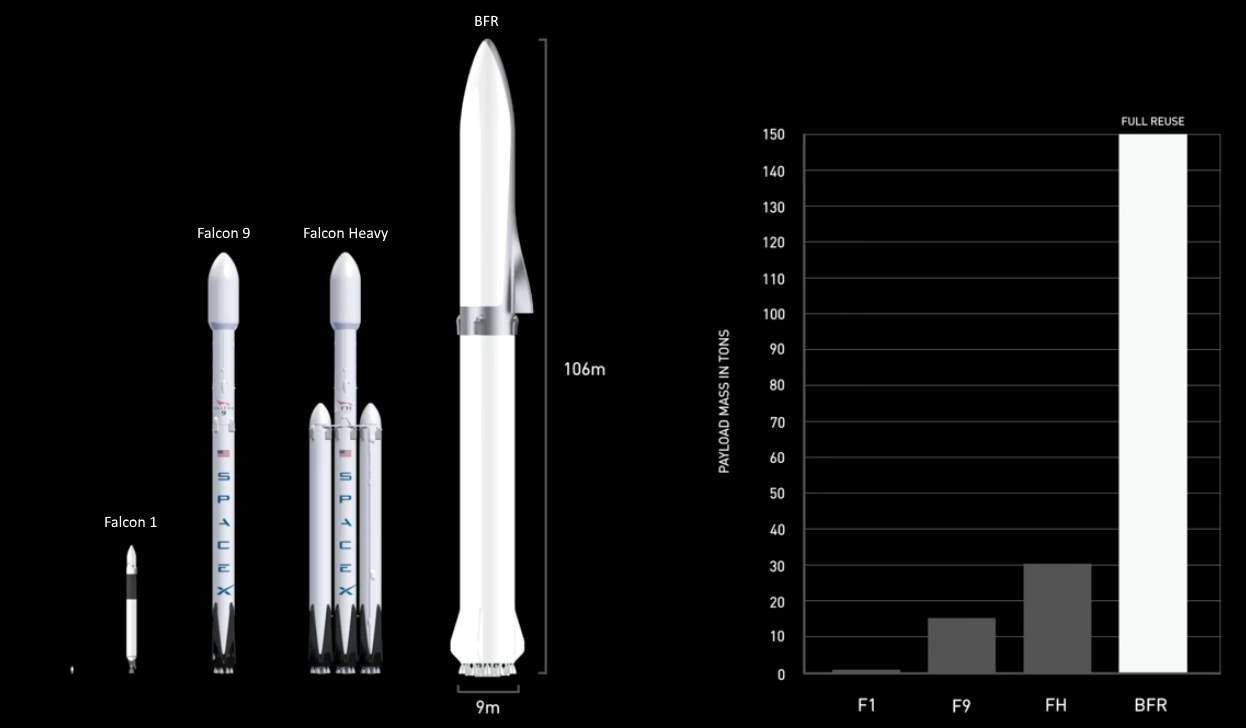
SLS (Space Launch System)
NASA’s Space Launch System, or SLS, is an advanced launch vehicle for a new era of exploration beyond Earth’s orbit into deep space. It will launch astronauts in the agency’s Orion spacecraft on missions to an asteroid and eventually to Mars while opening new possibilities for other payloads including robotic scientific missions to places like Mars, Saturn, and Jupiter. SLS is designed to be flexible and evolvable, to meet a variety of crew and cargo mission needs.
In 2015, NASA completed the critical design review – a first for a NASA exploration class vehicle in almost 40 years and continues to move forward with the production of the launch vehicle. Engineers are making rapid progress aimed toward delivering the first SLS rocket to NASA’s Kennedy Space Center in Florida for its first launch. As of December 2017, Flight hardware is currently in production for every element.
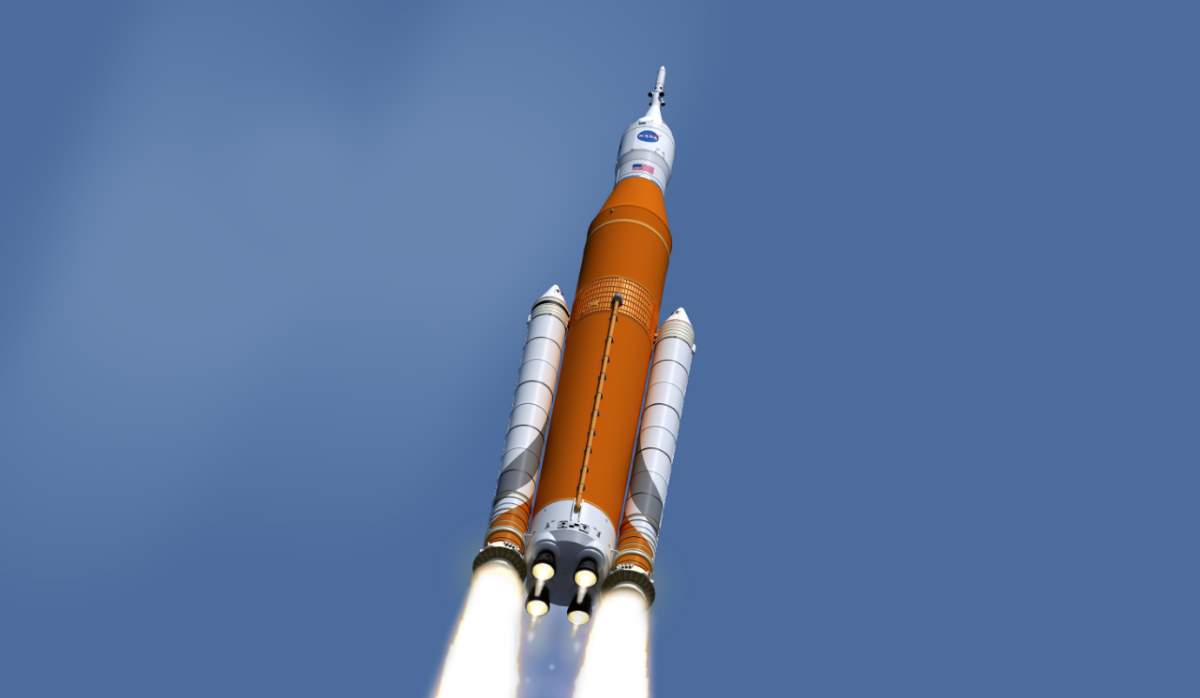
New Glenn Rocket
The New Glenn is a privately funded orbital launch vehicle in development by Blue Origin, the American privately funded aerospace manufacturer and spaceflight services company set up by Amazon.com founder Jeff Bezos. Design work on the vehicle began in 2012 and it is expected to make its initial test launch prior to 2020. New Glenn is described as a 7-meter-diameter (23 ft), two- or three-stage rocket. Its first stage will be powered by seven BE-4 engines that are also being designed and manufactured by Blue Origin. New Glenn’s first stage is designed to be reusable.
Notes
- BFR – the first and last letters stand for “big” and “rocket”. It is probably the acronym for “Big Fragging Rocket”. The name was coined by Musk personally in reference to the BFG 9000 (Big Fragging Gun) from the 1993 video game Doom. It can also be the acronym for “Big Falcon Rocket”
- Low Earth orbit (LEO) is an orbit around Earth with an altitude between 160 kilometers (99 mi) (orbital period of about 88 minutes), and 2,000 kilometers (1,200 mi) (orbital period of about 127 minutes).
Sources
- Saturn V on Wikipedia
- Falcon Heavy on Wikipedia
- BFR (rocket) on Wikipedia
- Space Launch System (SLS) Overview on NASA.gov
- New Glenn on Wikipedia
- How Many Elephants are Left in the World in 2025? - August 17, 2025
- Moon Landings: All-Time List [1966-2025] - February 2, 2025
- What Is Max-Q and Why Is It Important During Rocket Launches? - January 16, 2025
